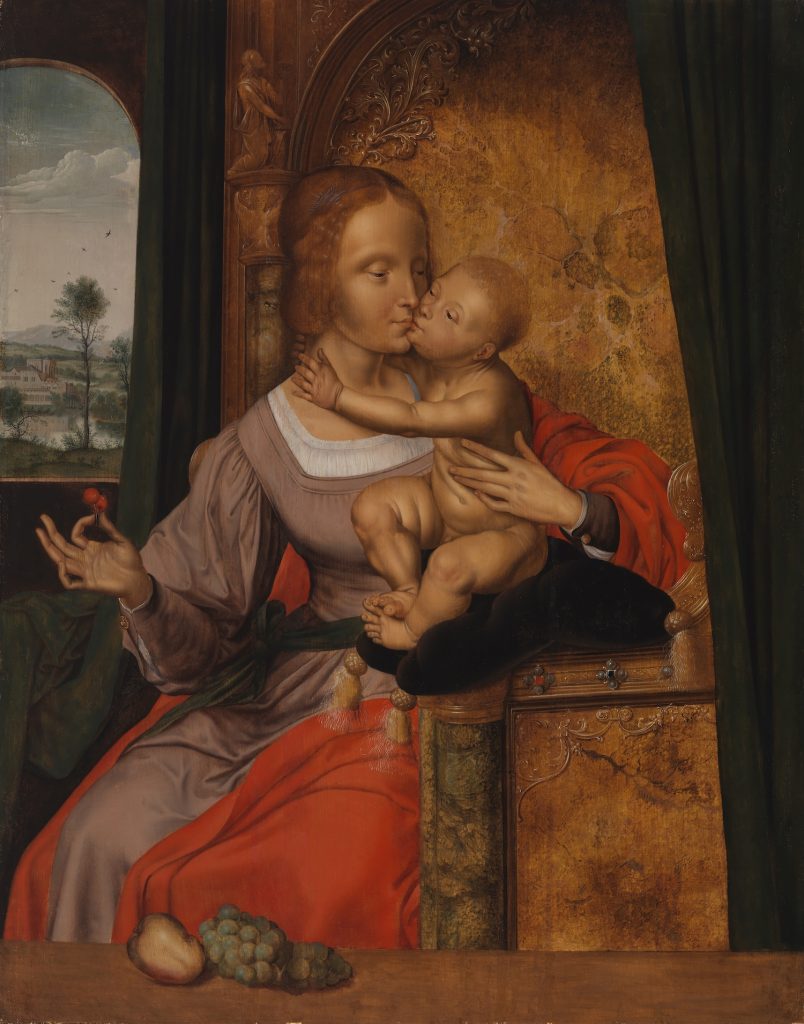Quinten Massys – Madonna with the Cherries, 16th century
The Madonna with Cherries, attributed to Quentin Matsys’s studio and dating from the 16th century, is one of the most beloved artworks of the Fine Arts Foundation. Because it is in poor condition, the painting has not been displayed for many years. The work is a panel on a wooden base, which has become cracked over the centuries. However, the future of the painting seems bright now.
Conservation work for the artwork has been in progress since 2012. The painting performed at some stage as touch-up and repair work has been removed from the image surface, and glue has been carefully applied to mend the cracked panel. The wooden base is very thin, only a few millimetres thick, and it reacts to even the slightest variations in relative humidity. This is why it needs a support structure that does not prevent the normal living of the panel but conforms to it properly.
The work has now progressed to the point at which conservation specialists Minna Matis and Olli Poijärvi are considering and testing various options for the panel’s support structure. They have been working in close collaboration with the international experts of the panel project for the Getty Conservation Institute, located in Los Angeles. In addition, Jean-Albert Glatigny, from Brussels, offered his top-class expertise in autumn 2013, when he acquainted himself with The Madonna with Cherries and, working alongside the Finnish conservators, pondered how to resolve the issue of the support structure.
Matis has created three, quite different support structure models for The Madonna with Cherries. The image presented here shows an English-type flexible support structure that follows Ray Marchant’s method. According to Matis, this structure would be composed of narrow-ended Sitka spruce battens that do not actually touch the panel. Small pieces of wood have been glued to the back of the panel, running in parallel with the wood grains. A fixing batten would be run through these pieces to hold the Sitka spruce battens in position. The design also features a slat attached to the Sitka spruce battens to connect them all to each other and keep the cross structure in place.
Restoration of the damaged portions of the painting has just begun. The conservation of the artwork will be complete once the restoration work is finished and the support structure installed. Then The Madonna with Cherries can travel back to Mänttä.
Kirsi Eskelinen
Head of Collections


